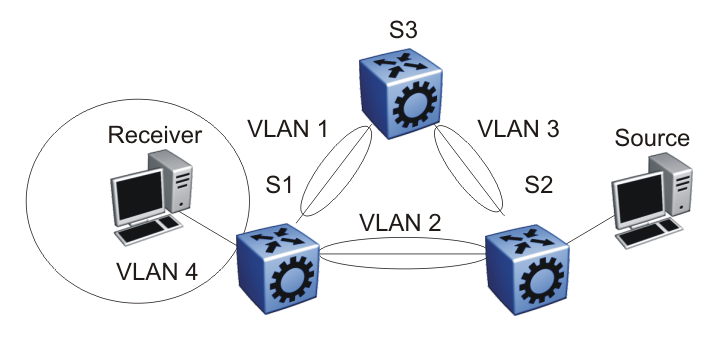Multicast scalability design rules
The following section lists the design rules to increase multicast route scaling.

Important
The switch does not support High Availability (HA).
The switch software supports the following:
-
Protocol-Independent Multicast (PIM)
-
Split MultiLink Trunking (SMLT) and Routed-SMLT (RSMLT)
Multicast scalability design rules
Whenever possible, use simple network designs that do not use VLANs that span several switches. Instead, use routed links to connect switches.
-
Whenever possible, group sources sending to the same group in the same subnet. The switch uses a single egress forwarding pointer for all sources in the same subnet sending to the same group. Be aware that these streams have separate hardware forwarding records on the ingress side.
Do not configure multicast routing on edge switch interfaces that do not contain multicast senders or receivers. By following this rule, you:
Provide secure control over multicast traffic that enters or exits the interface.
Reduce the load on the switch, as well as the number of routes. This improves overall performance and scalability.
Avoid initializing many (several hundred) multicast streams simultaneously. Initial stream setup is a resource-intensive task, and initializing a large number can increase the setup time. In some cases, this delay can result in stream loss.
Whenever possible, do not connect IP multicast sources and receivers by using VLANs that interconnect switches (see the following figure). In some cases, this can result in excessive hardware record use. By placing the source on the interconnected VLAN, traffic takes two paths to the destination, depending on the reverse path forwarding (RPF) checks and the shortest path to the source.
For example, if a receiver is on VLAN 1 on switch S1 and another receiver is on VLAN 2 on switch S1, traffic can be received from two different paths to the two receivers, which results in the use of two forwarding records. If the source on switch S2 is on a different VLAN than VLAN 3, traffic takes a single path to switch S1 where the receivers are located.
IP multicast sources and receivers on interconnected VLANs

